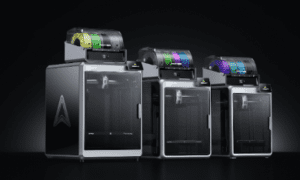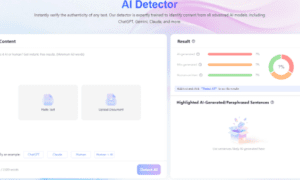The perception of space has changed dramatically over the past two decades. What was once the realm of government programs and science fiction is now a dynamic, fast-moving engine of commercial opportunity. But beyond rockets and astronauts, a quieter revolution is unfolding—one where space technologies are transforming industries here on Earth in ways that are often invisible, yet deeply impactful.
From energy to manufacturing, from logistics to agriculture, space-based systems are reshaping the way we design, operate, and build new industries. It’s not merely a tale of satellites—it’s the emergence of space as a foundational layer of industrial infrastructure. And as technology continues to advance, the line between terrestrial innovation and space-based enablers is vanishing rapidly.
Satellite-Driven Precision and Efficiency
At the hub of this new industrial era is information—specifically, Earth observation data from satellites orbiting the world in real time. These satellites can identify heat signatures, track land shifts, assess plant health, detect pollution, and even predict resource availability with great precision.
In farming, it will be precision agriculture: the ability to monitor soil moisture, track seasonal patterns, and irrigate with precision. In logistics, it will be better fleet management and optimal routing that saves fuel, time, and money. In the energy sector, satellite imagery supports the identification of new reserves as well as pipeline integrity monitoring over remote and harsh terrain.
These skills are not add-ons only—they’re soon to become the cradle to success in gaining a competitive edge. The learning from above enables industries to change gears from reactive decision-making to proactive strategy.
Advanced Manufacturing Meets Space Engineering
The leverage of space innovation is also being realized in the heart of advanced manufacturing. Material developed for spacecraft—intended to withstand extreme temperatures, radiation, and vacuum—is now leaving its own imprint on product design in the automotive, aerospace, and even consumer electronics sectors.
Take 3D printing, for example. Initially developed to perfection for space flight where weight and strength are critical factors, additive manufacturing technologies are now being utilized on Earth to make lighter, high-strength components at less cost and waste. The very same technologies that were developed out of the necessity of carrying out operations in space are now streamlining factory floors and enabling on-demand manufacturing closer point-of-use.
In some cases, the manufacture is actually being done in space. Tests aboard the International Space Station have shown that certain materials and biological products can be produced efficiently only in microgravity. The promise of in-orbit production—producing goods that cannot be copied on the ground—has the potential to reshape worldwide supply chains in the years to come.
Communication and Connectivity at a New Scale
Another significant enabler of industrial revolution is communication infrastructure. Constellations of low Earth orbit satellites are revolutionizing world connectivity. These networks enable high-speed, low-latency internet connectivity to distant locations where traditional infrastructure is not cost-effective or just not feasible.
For Arctic extraction, mid-ocean drilling platforms, or logistics convoys crossing international borders, seamless connectivity is no longer a luxury—it’s a business imperative. Space-based networks are making it happen, not only improving operations but setting the stage for real-time monitoring, predictive analytics, and frictionless automation.
This global web of space-supported communication is making way for the next industrial automation generation—one where machines, sensors, and systems are networked over vast distances with near-zero latency.
The impact of these trends is being tracked closely by platforms dedicated to space tech news and analysis, helping businesses and policymakers stay ahead of the curve as innovation accelerates. As space technology evolves, its applications across terrestrial industries are expected to grow exponentially.
Environmental Monitoring and Compliance
With an increasingly sustainability-focused world, space technology offers a perspective on environmental impact second to none. Satellites monitor everything from deforestation to leaks of methane, ocean heating to ice loss, giving companies the tools to measure their own footprint and comply with upcoming environmental legislation.
For steel production or petrochemicals, this type of monitoring is critical—not only for reporting but also for risk management as well as public accountability. With the rising trend of stricter ESG (Environment, Social, and Governance) norms being implemented globally, companies are leveraging satellite data to prove compliance and track their path towards carbon neutrality.
This type of openness, once difficult or impossible to achieve, is becoming a competitive edge. And it’s helping shift industrial strategy from defensive damage control to active leadership on sustainability.
The Emerging Economy in Orbit
With space becoming ever more commercially accessible, brand-new economic models are starting to sprout above the surface of Earth. In-orbit servicing, debris removal, space mining, and lunar logistics sound like science fiction, but startups and agencies already are building infrastructure for them.
Private space stations, reusable launchers, and robot repair units are on the drawing board—making up what some have characterized as the orbital economy. What is at this point far removed from everyday industry today will ultimately have deep spillover effects on Earth-based industries.
Think of the manner in which the race to the Moon in the 1960s brought about technological advances in computing, materials, and telecommunications that fueled a generation of technological growth. Space’s modern wave of innovation has the same prospect of long-term dividends, not merely in science but in the mechanics of business.
A New Industrial Mindset
Perhaps the most priceless transformation space is triggering isn’t technical but rather psychological. Space causes companies to think differently regarding boundaries, legacy systems, and incrementalism. It puts an end to timidness, systems thinking, and short-term vision. These are the same skills needed to thrive in a time of technological disruption accelerating.
Those businesses that are integrating space technologies into their business model are not just making new tools purchases—their embracing a philosophy that values resilience, worldwide thinking, and ongoing adaptation. The businesses that will power tomorrow are those that see that space is not a location—it’s part of the driving mechanism moving innovation forward.
As we look ahead, the intersection of terrestrial industry and out-of-orbit technology will increasingly dominate. Whether you’re monitoring crops, machining precision parts, or building the next global network, the force of space is already shaping your plan—whether you realize it or not.
The future of industry will not just be powered by robots, AI, or big data. It’ll be powered by all of them, woven together and boosted by a layer of infrastructure hovering in the background silently. Space is no longer the final frontier. It’s the next playground.



































